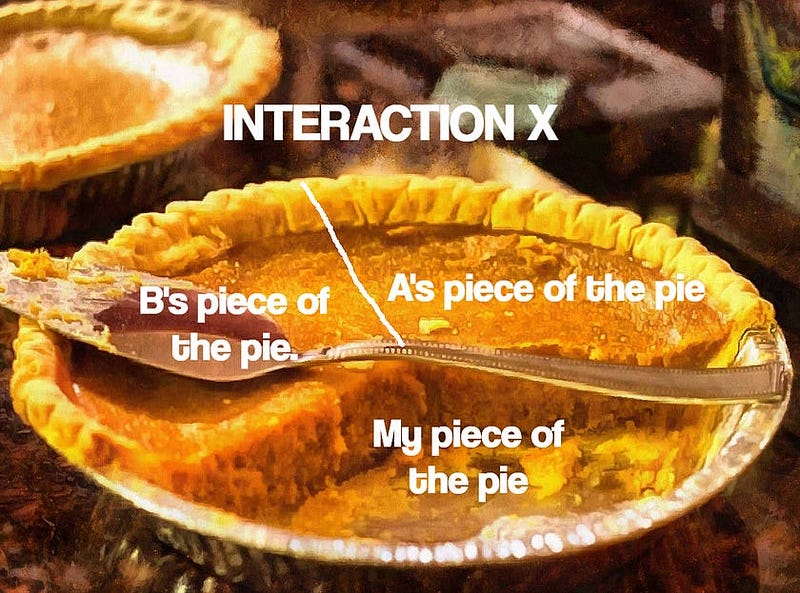Navigating Difficult Interactions: Claim Your Slice of the Pie
Written on
Understanding the Interaction Pie
In moments of challenging conversations, a therapist once posed a thought-provoking question: "What’s your piece of the pie?" This query arose after I described a tangled emotional exchange with a family member, filled with a multitude of "he said" and "I said" moments.
The therapist illustrated that every interaction resembles a pie, with each participant owning a slice that encapsulates their thoughts, feelings, words, and actions. For someone like me, recovering from a dysfunctional upbringing—marked by an emotionally abusive father, a codependent mother, and a brother with substance abuse issues—my goal was to identify my specific slice of the interaction pie.

Taking Responsibility for My Slice
Recognizing that I am accountable solely for my actions and reactions allows me to pinpoint my contribution to any situation. By reflecting on my words, behaviors, and emotional responses, I can assume responsibility for my slice of the pie. This introspection may reveal the need for further dialogue, an apology to my brother, or a deeper examination of my patterns of behavior, which could be added to my personal moral inventory.
How to Identify Your Slice
To discern which slice of the pie belongs to me, I focus primarily on myself—this is where my power lies. This self-awareness helps me maintain my integrity and provides clarity in sorting through the various slices.
Once the interaction concludes, I allow my feelings to settle, often through journaling or engaging in another calming activity. This helps me detach and reflect critically on my role. Here are some key questions I ask myself to identify my slice of the interaction:
- What did I contribute to the situation?
- What were my words and actions?
- How was I feeling at that time? Did my emotional state affect my response?
- Did I communicate in a way that invited dialogue or did I interrupt?
- What are the dynamics of my relationship with the other person? Are they in recovery or facing their own challenges?
- Did I allow myself to be triggered? Had I been taking good care of my mental, emotional, and physical well-being leading up to this?
- Did I provoke the other person? Did I use "you" statements that could be perceived as accusatory?
- Did I shift blame onto them for something that was my responsibility?
Processing these questions allows me to clarify my role in the interaction. I often need solitude and time to think through these issues, especially when my emotions are heightened. I've found charts helpful for visualizing the dynamics at play, especially in recurring conflicts, such as those with my brother.

The Journey to Self-Inquiry
While mastering this self-inquiry process has taken time, it has significantly enhanced my understanding of boundaries—helping me distinguish where I end and others begin. This practice also grants me the space to reflect long enough that I avoid impulsive reactions that I might later regret.
When I use the word “resolve” in this context, I don’t imply that every difficult interaction will culminate in harmony. Sometimes resolution may mean parting ways. Instead, I refer to the importance of owning one’s part of the encounter, taking responsibility, and making informed decisions about how to move forward—ultimately ensuring that I’ve addressed "my side of the street."
Chapter 1: The Importance of Self-Reflection
The first video presents a complete gameplay walkthrough of "Superliminal," showcasing all collectibles. This unique puzzle game emphasizes perspective and the power of perception, which aligns with the themes of self-awareness and introspection discussed in this chapter.
Chapter 2: Building Effective Communication Skills
The second video demonstrates how to create interactive Excel dashboards that can be updated with just one click. This practical skill can enhance communication by presenting data in a clear, engaging manner, which is critical when navigating complex interactions.